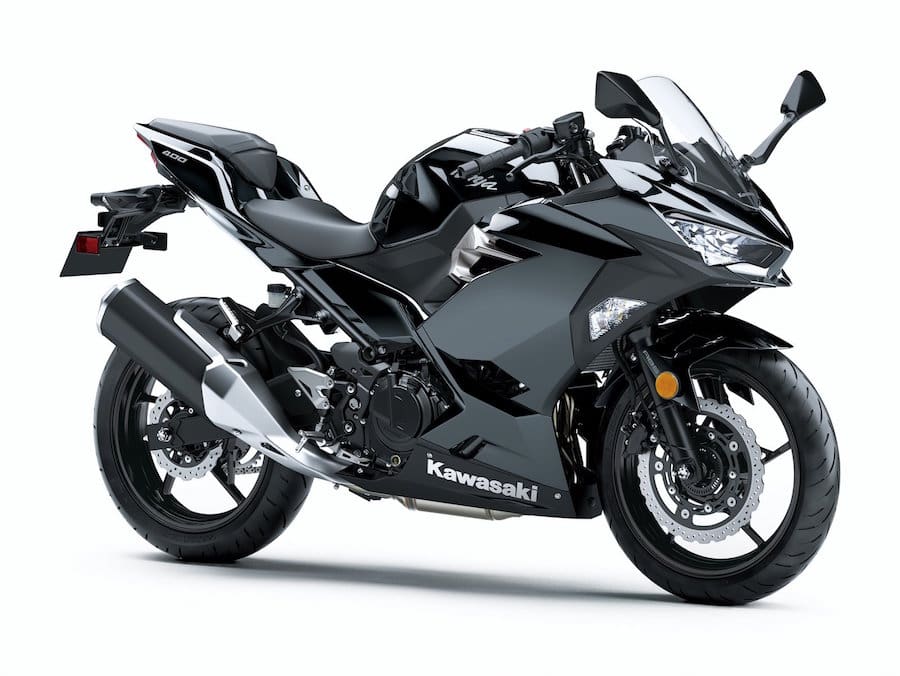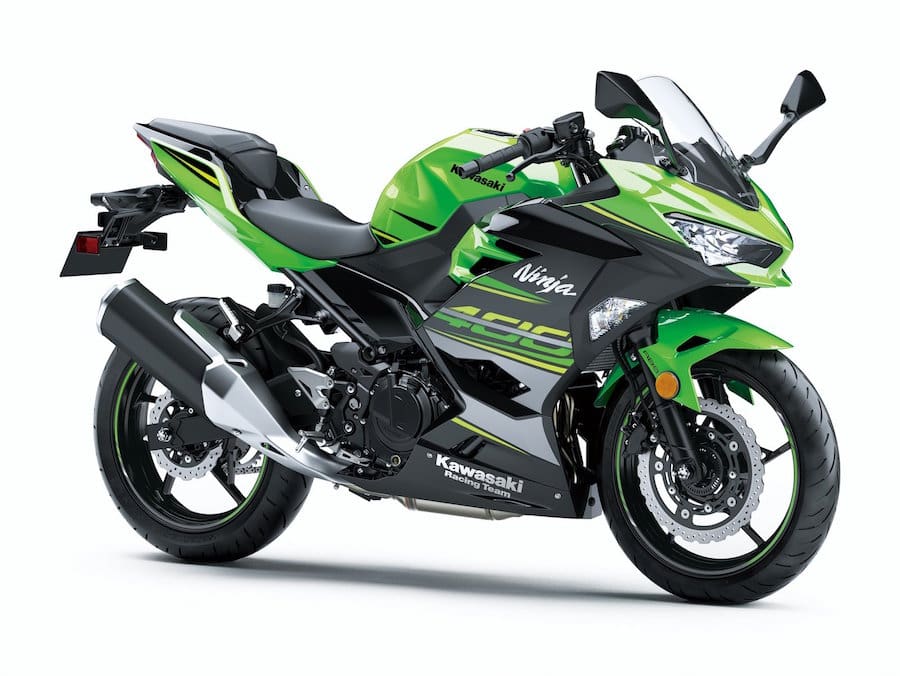Facelifts and a capacity hike from 250cc to 300cc couldn’t hide the fact its engine dates back to the GPz250 of the early 1980s.
For 2018, though, it’s replaced with the Ninja 400. Still a parallel twin, the Ninja 400 has quite different internal dimensions and a capacity of 399cc rather than 296cc, which adds up to a considerable performance boost.
In Europe, the Ninja 400 makes 33.4kW, but that figure was chosen to meet strict power-to-weight limits imposed on certain licence holders – rather like the LAMS restrictions on new riders in Australia. The European A2 licence limits riders to 35kW and a maximum of 0.2kW-per-kg. The new Ninja 400 weighs 168kg, so with 33.4kW its power-to-weight ratio is right at the limit, at 0.199kW/kg.
In America we understand the Ninja 400 will be sold in 36kW form, since it won’t have to meet the Euro power-to-weight limit.
The bike’s low weight is largely thanks to a steel trellis frame rather like the one that slashed the weight of the Ninja 650 a year ago. Despite the larger engine, the Ninja 400 – with ABS as standard – is 6kg lighter than the ABS-equipped version of the Ninja 300.
Suspension and brakes are largely similar to its predecessor, although Kawasaki says the 400’s 41mm forks are more rigid than the older bike’s versions, despite being the same size.
On the styling front, the Ninja 400 takes its cues from the H2, featuring a reverse-rake to its headlights and a chin spoiler below them that mimics the supercharged superbike’s front end. The seat unit also has a hint of the H2’s adjustable seat bolsters, but without the actual adjustability.
Despite its 399cc capacity, the Ninja is sure to be used in the WSS300 race championship, competing against the 321cc Yamaha R3, 373cc KTM RC390 and 471cc Honda CBR500R. The Superbike Commission will have to work out a suitable weight limit for the Ninja to balance its performance against its rivals.
The bike is due to reach dealers in February next year.
By Ben Purvis













